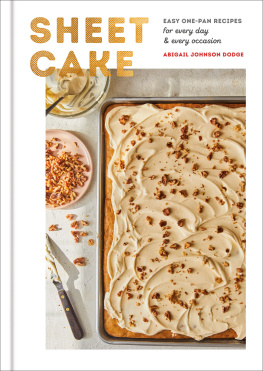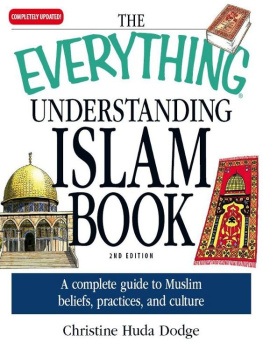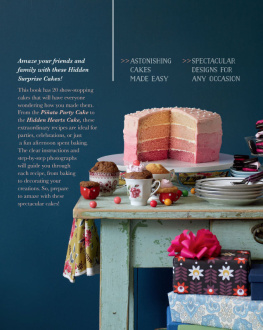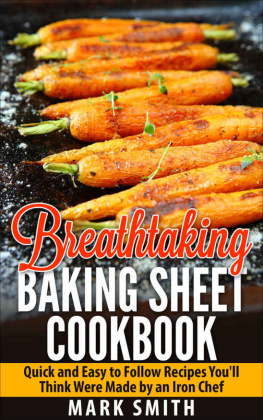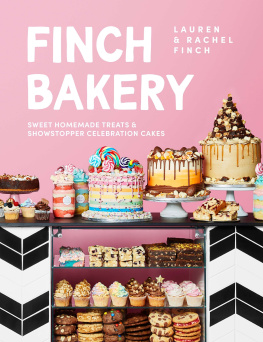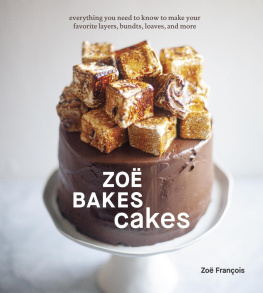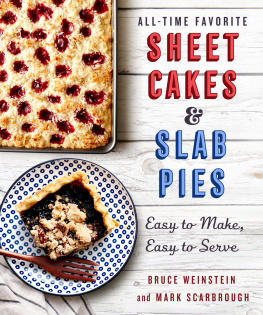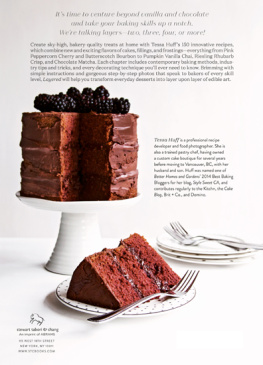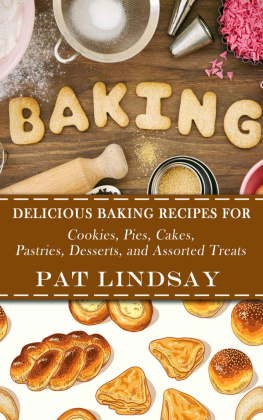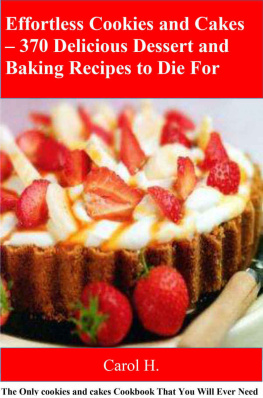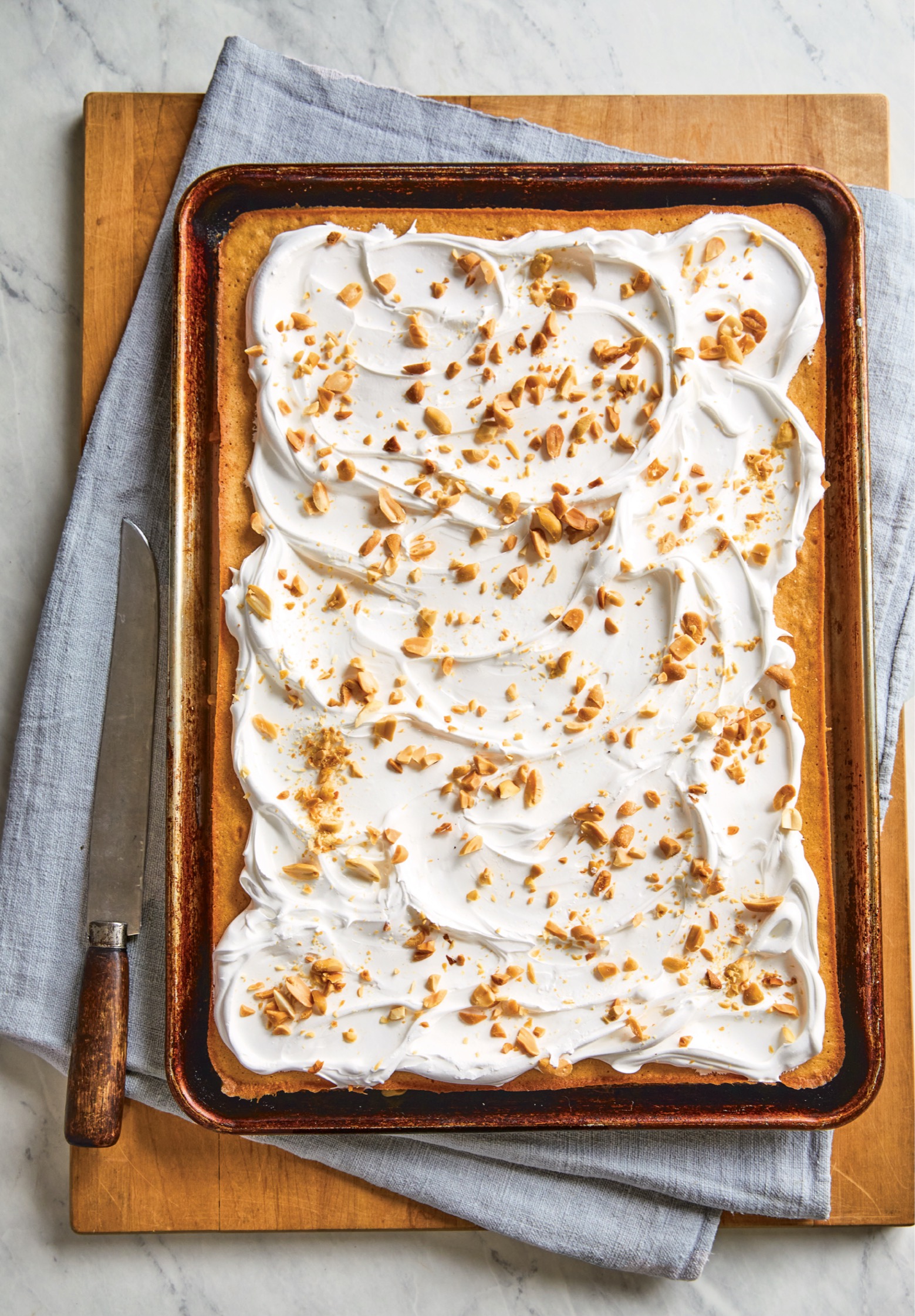Contents
Landmarks
Print Page List
acknowledgments
As my fellow authors would likely attest, writing a cookbook is a journey, and this one was no exception. It truly takes a team of rock stars to make a book come alive, and I am deeply grateful for the combined efforts of all the folks on Team Sheet Cake.
A special thanks goes out to the always effervescent Chris Hoelck and Juli Roberts. They masterfully produced, developed, and tested many of these cakes, and their insights and suggestions proved invaluable. Its a blessing to count them as friends as well as trusted colleagues.
I first worked with my agent, Rica Allannic, on a revision of The Joy of Cooking. Riding that roller coaster proved we could survive any publishing situation. Thanks, Rica, for sharing your in-depth knowledge of cookbook publishing. Your guidance, wisdom, and support got me through this ride. On to the next!
What readers dont see when turning the pages of a cookbook is the countless hours of dedicated hard work that goes on behind the scenes to produce a project like this one. Im grateful for all the talented art, design, editorial, marketing, and production teams at Clarkson Potter for creating this lovely book.
Thank you to Francis Lam and Aaron Wehner for leading an all-star team and for supporting this project. I am honored to add this book to your list.
Special thanks to my editor, Michele Eniclerico, for gracefully and effortlessly taking on this project and steering it home. Your enthusiasm, patience, and positivity meant the world to me.
Sending major kudos to production editor Patricia Shaw for guiding this book through the uncharted waters of a global pandemic. I can only imagine it took superhuman effort.
Stephanie Huntwork created the beautiful design of this book. Thank youinside and out, its gorgeous and exactly as I imagined it.
Many thanks to food photographer Lauren Volo and food stylist Monica Pierini for using their magical talents to create the glorious, happy images that bring these recipes to life.
Beyond grateful for Erica Gelbard, PR guru and my sister-in-cake. Looking forward to baking side-by-side one of these days!
Sending loving appreciation to my fellow bakers. Weve met and baked together for years, in real life as well as virtually, and I have cherished and grown from our shared experiences both as a baker and as a human. No matter how near or far we live from one another, you guys dole out buckets of laughter, friendship, and support.
Lastly and lovingly, my deepest thanks to Chris, Alex, and Tierney.
Abigail Johnson Dodge is the author of eleven cook-books, including The Everyday Baker, a James Beard Foundation Finalist and an IACP Cookbook Award Winner. She is a widely respected food writer, an acclaimed instructor, and a media personality. Abby was the founding test kitchen director at Fine Cooking magazine, where she served as a contributing editor and writer for more than twenty-five years. She has also written and contributed to dozens of popular, well-respected online and print media outlets. She hosts a monthly column on CooktheVineyard.com called Baking Together and her online baking classes can be found on Craftsy.com. For more information, please visit her website, AbbyDodge.com.
Conversion Chart
Equivalent Imperial and Metric Measurements
American cooks use standard containers, the 8-ounce cup and a tablespoon that takes exactly 16 level fillings to fill that cup level. Measuring by cup makes it very difficult to give weight equivalents, as a cup of densely packed butter will weigh considerably more than a cup of flour. The easiest way therefore to deal with cup measurements in recipes is to take the amount by volume rather than by weight. Thus the equation reads:
1 cup = 240 ml = 8 fl. oz. cup = 120 ml = 4 fl. oz.
It is possible to buy a set of American cup measures in major stores around the world.
In the United States, butter is often measured in sticks. One stick is the equivalent of 8 tablespoons. One tablespoon of butter is therefore the equivalent to ounce/15 grams.
Liquid Measures
| FLUID OUNCES | U.S. | IMPERIAL | MILLILITERS |
|---|
| 1 teaspoon | 1 teaspoon | 5 |
| 2 teaspoons | 1 dessertspoon | 10 |
| 1 tablespoon | 1 tablespoon | 14 |
| 1 | 2 tablespoons | 2 tablespoons | 28 |
| 2 | cup | 4 tablespoons | 56 |
| 4 | cup | 120 |
| 5 | pint or 1 gill | 140 |
| 6 | cup | 170 |
| 8 | 1 cup | 240 |
| 9 | 250, liter |
| 10 | 1 cups | pint | 280 |
| 12 | 1 cups | 340 |
| 15 | pint | 420 |
| 16 | 2 cups | 450 |
| 18 | 2 cups | 500, liter |
| 20 | 2 cups | 1 pint | 560 |
| 24 | 3 cups | 675 |
| 25 | 1 pints | 700 |
| 27 | 3 cups | 750 |
| 30 | 3 cups | 1 pints | 840 |
| 32 | 4 cups or
1 quart | 900 |
| 35 | 1 pints | 980 |
| 36 | 4 cups | 1000, 1 liter |
| 40 | 5 cups | 2 pints or 1 quart | 1120 |
Solid Measures
| U.S. AND IMPERIAL MEASURES | METRIC MEASURES |
| OUNCES | POUNDS | GRAMS | KILOS |
|---|
| 1 | 28 |
| 2 | 56 |
| 3 | 100 |
| 4 | 112 |
| 5 | 140 |
| 6 | 168 |
| 8 | 225 |
| 9 | 250 |
| 12 | 340 |
| 16 | 1 | 450 |
| 18 | 500 |
| 20 | 1 | 560 |
| 24 | 1 | 675 |
| 27 | 750 |
| 28 | 1 | 780 |
| 32 | 2 | 900 |
| 36 | 2 | 1000 | 1 |
| 40 | 2 | 1100 |
| 48 | 3 | 1350 |
| 54 | 1500 | 1 |
Oven Temperature Equivalents
| FAHRENHEIT | CELSIUS | GAS MARK | DESCRIPTION |
|---|
| 225 | 110 | Cool |
| 250 | 130 |
| 275 | 140 | 1 | Very Slow |
| 300 | 150 | 2 |
| 325 | 170 | 3 | Slow |
| 350 | 180 | 4 | Moderate |
| 375 | 190 | 5 |
| 400 | 200 | 6 | Moderately Hot |

